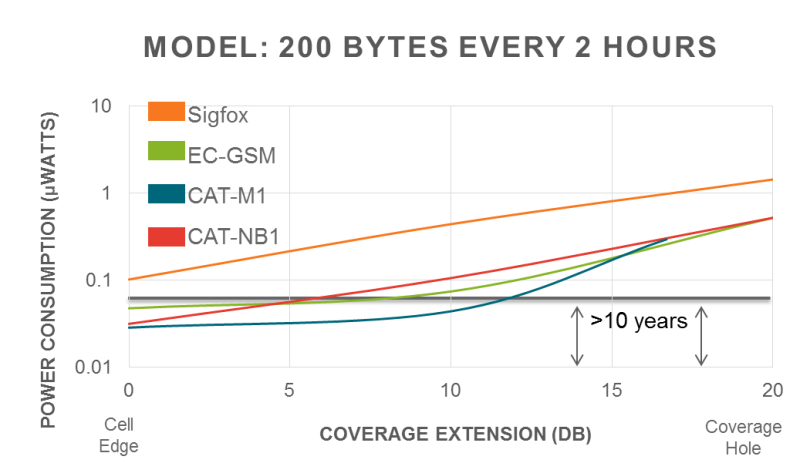In my last post, I wrote about how Low Power Wide Area (LPWA) technologies are addressing the critical four C’s for the IoT to unlock its potential and enable new use cases. Now let’s breakdown the pros and cons of standard versus proprietary technologies.
For starters, all standard LPWA technologies only require a simple software update to existing infrastructure—no new infrastructure required. This is really the key differentiator. In terms of global coverage, for example, existing mobile networks today are available in each and every country from multiple operators, with a territorial coverage of virtually 100 percent and continuous services across national borders, thanks to roaming capabilities.
Additional invaluable benefits of using mobile networks include long-term availability and high reliability. These networks have a proven ability to scale massively through a combination of technical features, usage of cells-based topology and operation in non-interfered licensed spectrum bands. They can also provide bank-level security for communications. The large number of actors in this big ecosystem also ensures a reliable supply chain, together with healthy competition that will durably keep prices down.
Proprietary technologies, such as LoRA, Sigfox, and Ingenu can be fast to develop, given the spectrum is free, but reliability or interference in the unlicensed bands and the limited ecosystem can limit quality of service, scalability and global reach. They are also designed to transmit very small messages, less than 20 bytes in some cases, resembling more of a short messaging service (SMS) that limits their flexibility to support some application requirements. Other features to be aware of are downlink capability and the ability to support basic security encryption

On the standard side, both LTE-M (aka eMTC) and NB-IoT are quickly commercializing as mobile network operators around the globe roll out their IoT services. We expect major global coverage by the end of 2018.
A study from the 3GPP (TR 45.820, GPC-150313) provides an “apples-to-apples” comparison for power and coverage. The study was based on sending 200 bytes of data every two hours on two AA batteries. Zero here refers to the cell edge of coverage today and 20dB refers to a very deep coverage hole – like a basement.

As you can see from the chart, all LPWA technologies can meet the 10-year benchmark in good coverage, but no LPWA technology can provide both huge coverage range and great power consumption at the same time—this is the laws of physics. Past the +12dB coverage point, none of the methods can provide 10 years of battery because coverage is gained by lowering the data rate. But lowering the data rate requires very long transmit times, which draws significant power.
So you may be able to deploy base stations only every 20km but if you do this, then many devices will be in bad coverage and thus have bad battery life.
Bottom line, there is no better battery saving and coverage technique than densely deployed base stations. So be wary of LPWA technologies and deployments that have base sites deployed every 20km. They may have the coverage, but the battery life and the data speeds will be very limited.
Hopefully you’ll remember the 4 Cs from my last post; they’re table stakes for the IoT, but many applications require more than that. Additional things to think about when selecting an LPWA technology include:
- Will my application require over-the-air upgrades in the future?
- Will my application require basic positioning or voice?
- Does my application require the use of standard security protocols (HTTPS/SSL)?
- Is my device mobile? Will it move between cities? Countries? Continents?
- How long will my application be deployed? Months? Years?
- How reliable of a connection do I need? Is it serving a mission critical application where?
- If you’re deploying on unlicensed spectrum, what guarantees do you have that interference won’t be a problem in the future?
- If you’re deploying on a licensed spectrum, can the network operator offer the SLA terms you require?
Although we’ve covered the 4 Cs and tearing down how proprietary technologies stack up to standard mobile IoT technologies, there’s a lot consider when selecting a technology for your application. You’ll need to base your selection on both current and future requirements.
My next post in this series will give you a cheat sheet to decode the different types of standard technologies.
Looking for more information about LPWA? Start with Sierra to speak with one of our experts who can help you deploy the right LPWA technology for your application. Download the whitepapers, LPWA: Separating Fact From Fiction, Coverage Analysis of LTE-M Category M1, and our What is LPWA? infographic.
Editor’s Note: This post was originally published in August 2016 and has been updated for accuracy and comprehensiveness.



